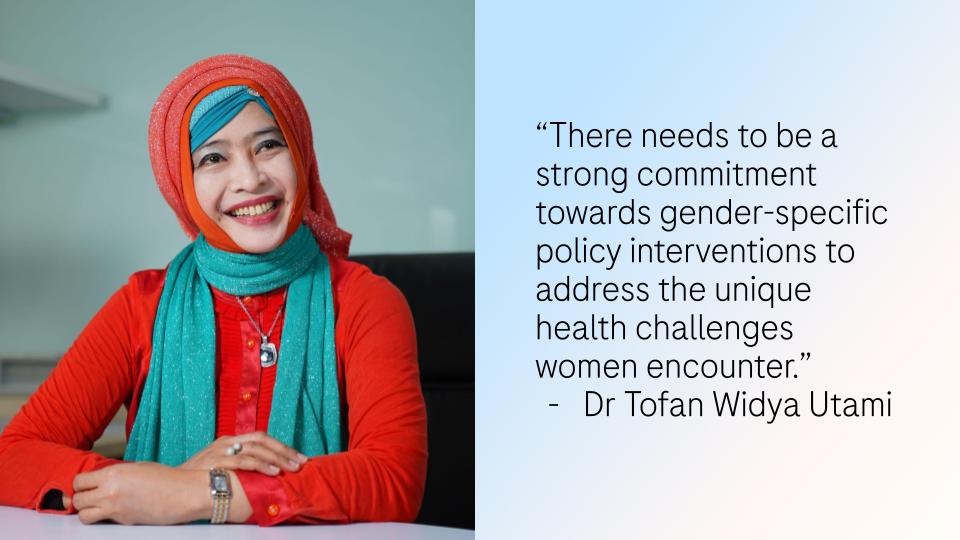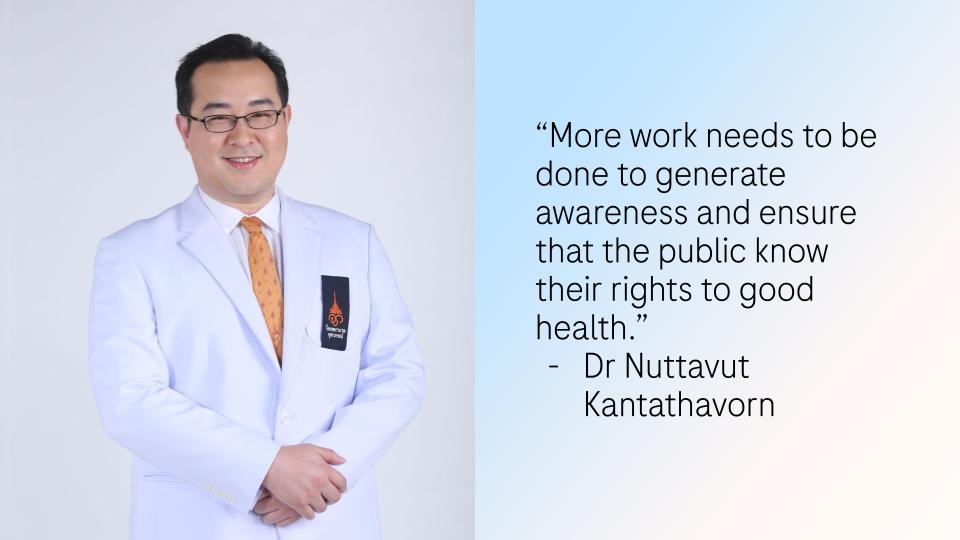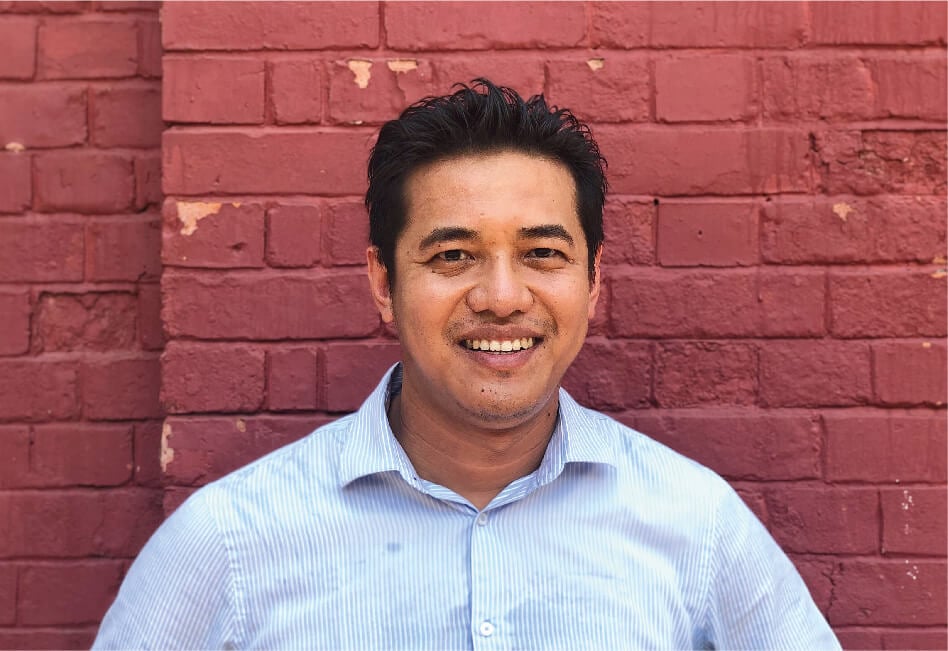Cervical cancer is preventable but lack of awareness about the disease and access to screening have often been the main obstacle. We talk to experts from Indonesia and Thailand on breaking down barriers to cervical cancer.

When Dr Tofan Widya Utami ran the routine pregnancy tests for her patient at the Cipto Mangunkusumo General Hospital in Jakarta, she faced a dilemma. The 36-year-old expectant mother was diagnosed with early stage cervical cancer.
“Her life was at risk and we recommended terminating the pregnancy, but her husband refused. Even in this life threatening situation, she was unable to make a decision on her own,” says Dr Tofan, a specialist in Gynecology Oncology and a strong advocate for women’s health in Indonesia. Eventually, the delay, denial, and loss of follow-up narrowed options for the unborn baby and mom. Dr Tofan says despite an early C-Section delivery and multiple rounds of chemotherapy, the patient lost her life several months after childbirth.
Cervical cancer during pregnancy is relatively uncommon. However, the cancer itself is not. It remains among the leading cancers among women globally with about 90% of new cases and deaths in 2020 having occurred in low- and middle-income countries.1 An estimated 19300 Indonesian women2 lose their lives to cervical cancer annually, which is the second most common cancer3 in the country. Although preventable and highly treatable if detected early, cervical cancer incidence has doubled over the last five years and survival rate for women diagnosed with the disease remains abysmally low at 50 percent, thus suggesting many barriers to screening.4
In a society ruled for generations by cultural tradition, women are often misinformed and have limited knowledge regarding their health and hygiene.

According to Dr Tofan, a range of factors render Indonesian women more vulnerable to developing cervical cancer; entrenched beliefs and attitudes, social stigmas associated with the disease and women relying on family for decision-making impede many from accessing early screening. In fact, an estimated 70% of women with cervical cancer are in the advanced stage when they visit hospitals for initial treatment.5 What’s worse, limited access to healthcare in the archipelago state comprising of more than 17,000 islands poses a more complex and “unpreventable” geographical challenge. Dr Tofan says prevention is a better strategy than cure.
Having signed the WHO’s Global Strategy to Accelerate the Elimination of cervical cancer, Indonesia has committed to screen at least 70% of women between the ages 35 and 45 and to enable 90% of women diagnosed with cervical cancer to receive treatment by 2030.6,7 Last year, the Indonesian government announced it was adding the Human Papillomavirus (HPV) vaccine to the list of routine free immunisations administered nationwide. The move aims to reduce the risk of cervical cancer among women, and comes as the government places more emphasis on preventive instead of curative treatments in addressing the country’s health challenges. While Dr Tofan says Indonesia’s commitment to upscaling free HPV vaccination is a major milestone for young Indonesian women, more effort needs to be made towards older women, requiring continued advocacy and greater investment from the government in the years ahead.
“There needs to be a strong commitment towards gender-specific policy interventions from multiple stakeholders, including the Ministry of Health, Ministry of women and Child Protection, Ministry of Education and Planning to address the unique health challenges women encounter. Every woman is at risk for getting cervical cancer regardless of their sexual behaviour, economic status or educational background. If developed countries like Australia can prove to eliminate cervical cancer and there is evidence, then it’s just as possible to do the same in Indonesia.”
Thailand: a model of success
Just two decades ago, like many other low-and middle-income countries, Thailand was also struggling to find a way to beat cervical cancer. For 30 years, it had tried the test-and-refer approach, which involved cytology screening using Pap smear and referrals. But this approach had not made a dent in the incidence of cervical cancer deaths in the country. Then in 2000, the trajectory of the country’s efforts to establish a viable cervical cancer prevention and control program altered with the Safety, Acceptability, Feasibility and program implementation Effort (SAFE) study which was a single visit approach, combining visual inspection of the cervix with acetic acid (VIA) and cryotherapy.

This low-cost method did not need electricity, sophisticated labs or equipment. It was provided by non-physicians, required women to visit only once, and it could be made available even in hard-to-reach interiors of the country. Given the low doctor-to-patient ratio, Dr Nuttavut Kantathavorn, Gynecologic Oncologist at the Chulabhorn Hospital in Bangkok says nurses were tasked with doing cryotherapy which “helped make screening more accessible for Thai women at the time.” The programme has become an inspiration for many countries in the South-East Asia region attempting to implement low-cost health interventions and demonstrate how partnership efforts can advance women’s health and equality.
Looking ahead, it’s quite possible that Thailand will meet the WHO’s goal to eliminate cancer by 2030. While the country has had a National Cervical Cancer Screening Policy since 2002, there are many ongoing campaigns to raise awareness about the disease. According to WHO, 6 in 10 women in Thailand have been screened for cervical cancer in the last 5 years8 and Dr Nuttavut asserts that Thailand’s vaccination and screening standards are on par with developed countries, thereby making cervical cancer likely “a rare disease in the near future.”
“There needs to be a strong commitment towards gender-specific policy interventions from multiple stakeholders, including the Ministry of Health, Ministry of women and Child Protection, Ministry of Education and Planning to address the unique health challenges women encounter. Every woman is at risk for getting cervical cancer regardless of their sexual behaviour, economic status or educational background. If developed countries like Australia can prove to eliminate cervical cancer and there is evidence, then it’s just as possible to do the same in Indonesia.”
Additionally, Thailand’s healthcare for women at government medical facilities is quite comprehensive and gratis. Thais are entitled to Universal Health Coverage (UHC), Social Security Scheme (SSS) or the Civil Servant Medical Benefit Scheme (CSMBS), providing women with a range of health care services, including cervical cancer screening and treatment, free of cost. While the tests and treatments are accessible for all, Dr Nuttavut says, more work needs to be done to generate awareness and “ensure that the public know their rights to good health.”
*The information contained in this article was extracted from Edition 2023, Vol 13.





